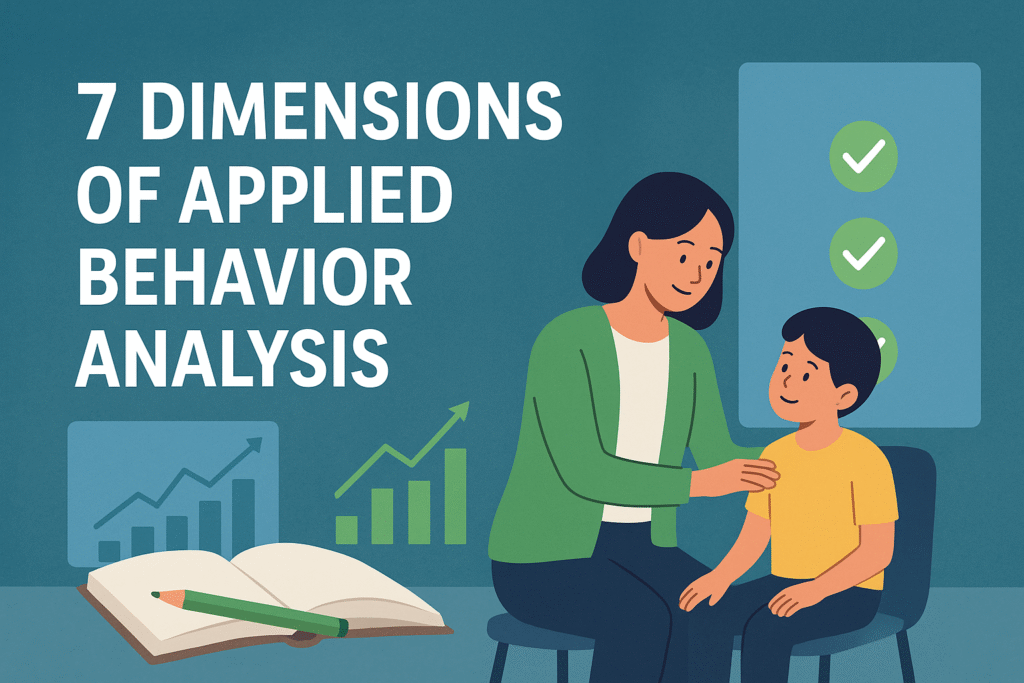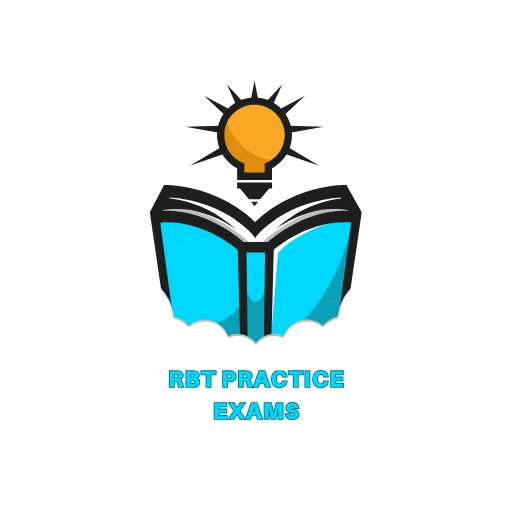When people talk about applied behavior analysis (ABA), they often refer to the 7 dimensions of applied behavior analysis. These dimensions are the foundation of ABA and guide how behavior interventions are designed, measured, and applied. First introduced by Baer, Wolf, and Risley in 1968, the framework ensures that ABA remains effective, ethical, and evidence-based.
Table of Contents

If you’re preparing for the RBT exam or just beginning your ABA journey, understanding these seven dimensions is essential. Let’s break them down in a clear, human-friendly way.
What Are the 7 Dimensions of Applied Behavior Analysis?
The 7 dimensions of applied behavior analysis describe the standards ABA professionals follow to make sure treatment plans are meaningful, scientific, and effective. They include:
Applied
Behavioral
Analytic
Technological
Conceptually Systematic
Effective
Generality
Each of these ensures that ABA interventions stay focused on real-world outcomes and can be replicated in different settings.
The 7 Dimensions of Applied Behavior Analysis
- Applied: Focusing on Real-Life Impact
The “applied” dimension means ABA is centered on behaviors that matter in daily life. Interventions are designed to make practical improvements, whether that’s helping a child communicate, teaching social skills, or reducing harmful behaviors. In other words, the goal isn’t abstract theory—it’s meaningful change for the individual.
- Behavioral: Targeting Observable Actions
ABA only works with behaviors that can be observed and measured. Instead of vague goals like “improve happiness,” the focus is on measurable actions such as “initiate greetings” or “ask for help.” This allows progress to be tracked with real data, not assumptions.
- Analytic: Making Data-Driven Decisions
The “analytic” dimension is about proving that the intervention is what caused the change. ABA professionals use data collection and analysis to show a clear relationship between strategies and outcomes. If progress isn’t happening, adjustments are made based on the data not guesswork.
- Technological: Clear and Replicable Procedures
In ABA, treatment plans must be written in a way that anyone trained can follow. That means instructions are specific, detailed, and replicable. For example, instead of writing “use positive reinforcement,” the plan would say: “When the child raises their hand, provide verbal praise within two seconds.”
- Conceptually Systematic: Grounded in Behavioral Principles
Every ABA strategy should connect back to well-established principles of behavior, such as reinforcement, punishment, or extinction. This prevents interventions from being random or based on personal preference. It keeps ABA rooted in science.
- Effective: Producing Meaningful Results
For an intervention to be “effective,” it must lead to real, socially significant improvements. The change should make a noticeable difference in the person’s life, not just a small shift in data points. Effectiveness is about outcomes that truly matter to the individual and their family.
- Generality: Lasting Change Across Settings
The final dimension ensures that new skills aren’t just temporary or limited to one environment. A child learning to request items at home should also be able to do it at school, in the community, and over time. Generality is about creating long-term, flexible skills that stick.
Why the 7 Dimensions Still Matter Today
Even though these dimensions were introduced more than 50 years ago, they remain the gold standard in ABA practice. Organizations like the BACB still highlight their importance for ethical, evidence-based interventions.
For those preparing for the RBT exam, understanding the 7 dimensions of applied behavior analysis is crucial. Questions often test your knowledge of how each dimension applies in real-world scenarios. That’s why practicing with an rbt practice exam or an rbt mock test is one of the best ways to prepare.
FAQs About the 7 Dimensions of ABA What are the 7 dimensions of ABA in simple terms?
They are guidelines that ensure ABA focuses on real-life change, uses measurable behaviors, relies on data, has clear procedures, is grounded in behavioral science, produces meaningful results, and creates lasting skills.
Who created the 7 dimensions of applied behavior analysis?
Baer, Wolf, and Risley introduced them in their 1968 paper, which is still considered a cornerstone of ABA.
Why are the 7 dimensions important for RBTs?
RBTs (Registered Behavior Technicians) apply ABA principles daily. Knowing the 7 dimensions helps them design and implement interventions that are ethical, effective, and measurable. Practicing with an rbt practice test can help reinforce these concepts.
How do the 7 dimensions show up on the RBT exam?
The exam may include scenario-based questions where you have to identify which dimension is being applied—for example, recognizing that tracking observable actions falls under “behavioral.”
Are the 7 dimensions still relevant in 2025?
Yes. Despite advancements in research, the core framework remains unchanged. They continue to guide ABA therapy and ensure interventions meet scientific and ethical standards.
Conclusion: Learning the 7 Dimensions for Success
The 7 dimensions of applied behavior analysis are more than theory—they’re the backbone of ethical, effective, and practical ABA practice. Whether you’re preparing for your RBT certification or working with clients, these dimensions keep interventions focused on what truly matters: meaningful, lasting change.
If you’re ready to put your knowledge into practice, start with an rbt practice exam today. Building confidence with rbt practice tests and rbt mock tests can make all the difference when exam day comes.
